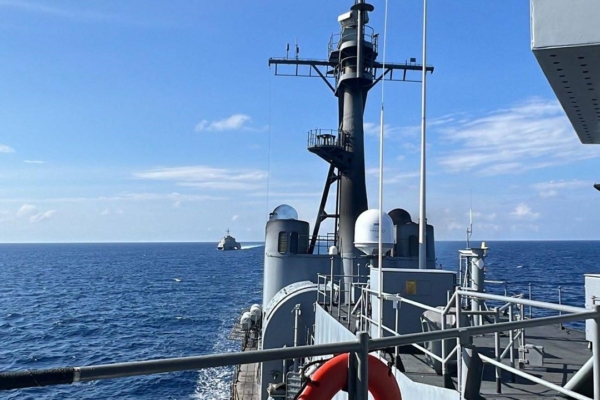The United States and Australia have announced that their militaries will conduct joint maritime operations in the South China Sea with the Philippines, Japan, and New Zealand. This area is one of the most sensitive in Asia.
According to a statement from the Australian Department of Defence on Saturday, the maritime cooperation activity demonstrates their commitment to strengthening regional and international cooperation to support peace, stability, and prosperity in the Indo-Pacific region.
Australia stated that the activities will take place within the Philippines’ exclusive economic zone and will be conducted in accordance with international law, respecting navigational safety and the rights of other countries.
The statement also mentioned that the naval vessel HMAS Sydney and an Australian Air Force P-8A Poseidon maritime patrol aircraft will operate together with partner countries to promote cooperation and interoperability among their armed forces.
The US Indo-Pacific Command also released a statement, calling this the fourth iteration of the multinational joint maritime operation.
The statement emphasized that naval and air forces from participating countries will work together to enhance cooperation among armed forces.
“The United States, along with our allies and partners, are working together to uphold the rights to freedom of navigation and overflight, lawful use of the seas and airspace, and respect for maritime rights under international law,” stated the US Indo-Pacific Command.
This joint exercise comes after a series of maritime and aerial conflicts in the disputed areas of the South China Sea between China and the Philippines, including the highly contested Scarborough Shoal, located 200 kilometers off the coast of the Philippines in their exclusive economic zone but has been occupied by the Chinese Coast Guard for years.
On Wednesday, naval vessels from Japan, New Zealand, and Australia sailed through the Taiwan Strait. According to reports citing multiple sources, Japan’s Maritime Self-Defense Force destroyer Sazanami sailed from north to south through the Taiwan Strait that morning.
It was reported that the Sazanami was accompanied by the Australian Navy destroyer HMAS Sydney and the New Zealand Navy replenishment vessel HMNZS Aotearoa, entering the Taiwan Strait from the East China Sea. After sailing south for over ten hours, the vessels passed through the narrow waters between Fujian Province and Taiwan that night.
The Australian Department of Defence stated that this demonstrated Australia’s commitment to an open, stable, and prosperous Indo-Pacific region.
Reports indicated that these vessels were heading to the South China Sea to participate in military exercises.
Despite not governing Taiwan, the Chinese government claims the democratic island as part of its territory, asserting that China has sovereignty and jurisdiction over the Taiwan Strait.
Both the United States and Taiwan assert that the strait is an international waterway through which about half of the world’s container ships transit, making it a crucial trade route.
Beijing contends that China almost entirely owns the South China Sea, conflicting with maritime territorial claims by Brunei, Malaysia, the Philippines, Vietnam, and Taiwan.
The South China Sea serves as a vital international waterway for Asia-Pacific countries to access the Indian Ocean and Pacific Ocean, and China’s increasingly aggressive actions in the region have raised concerns among neighboring countries.

